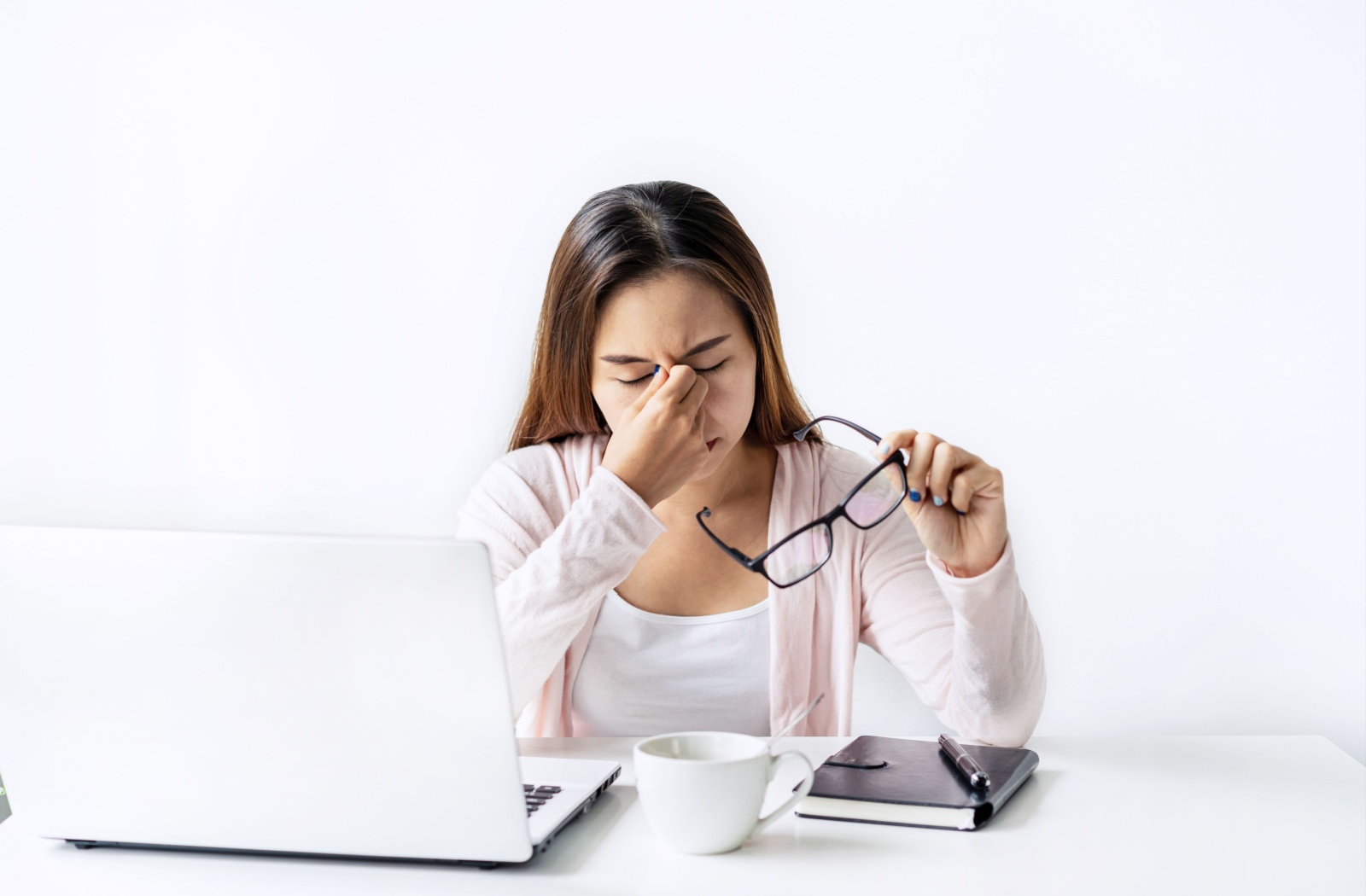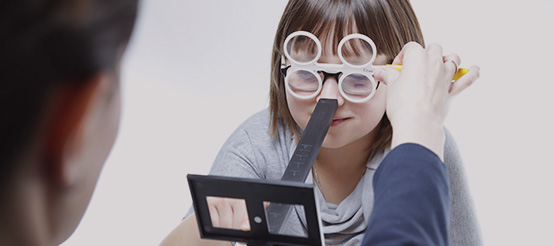The digital era has fundamentally changed our relationship with screens, from when we head to our work computers to the handheld devices clutched tightly during the last waking moments at night. As a result, many of us are familiar with the uncomfortable symptoms of digital eye strain.
Unfortunately, there isn’t a one-size-fits-all answer to how long digital eye strain lasts because it can vary from person to person. However, its symptoms typically resolve shortly after removing the cause, such as digital screen use. You can also do some things to help reduce the severity and length of your symptoms, which we’ll cover in more detail below.
One thing to note is that you should see your optometrist for an eye exam if your symptoms persist. They can rule out anything else contributing to your uncomfortable eyes.
What Is Digital Eye Strain?
Digital eye strain, also known as computer vision syndrome, encompasses a range of ocular symptoms resulting from prolonged digital device use. Symptoms can include:
- Dry eyes
- Headaches
- Double vision
- Blurred vision
- Sore neck and shoulders
Digital eye strain often has a subtle onset of discomfort that silently compounds, unlike many ailments with clear beginnings and endings. As we spend more time on our screens, it’s critical to understand the implications for our long-term eye health.
Factors that Can Influence Duration
Just how long does digital eye strain linger? The answer is as dynamic as the factors influencing it.
Screen Time Habits
Your digital habits can dictate the persistence of eye strain. Morning-to-night screen exposure can correlate with more severe and longer-lasting symptoms. For example, if you develop strained eyes earlier in the day but must be on your screen all day, you may experience persistent symptoms until you close your eyes at night.
Lighting Conditions
Poor lighting can negate healthy screen practices. Harsh or insufficient lighting can significantly ramp up eye strain and the time it takes to recover. The placement of lighting is just as important as the type because screen glare can also contribute to your symptoms.
Viewing Distance
It’s not only about how long you spend looking at a digital screen. The distance you typically view it can also impact how long your digital eye strain lingers. Sitting too close to your screen can contribute to the symptoms of digital eye strain.
Long-Term Impact of Digital Eye Strain
Digital eye strain isn’t just a temporary nuisance—it can point to deeper ocular concerns and influence your eye health over time.
The intermittent, yet consistent, exposure to digital screens can lead to long-term issues, such as myopia progression in younger populations and a potential for the development of chronic dry eye syndrome and digital eye strain in youth and teenagers.
Tips for Alleviating & Preventing Digital Eye Strain
Managing screen-enclosed lives can feel daunting, but several practices are well within reach.
The 20-20-20 Rule
The 20-20-20 rule is a simple yet effective way to combat eye strain. Taking frequent breaks and focusing on distant objects gives your eyes a much-needed breather. This practice is simple—every 20 minutes, take 20 seconds to look at something 20 feet away. This momentary break gives your eyes a chance to readjust their focus.
Adjusting Screen Settings
The luminosity and resolution of your device don’t just impact visibility; they also influence eye strain. Opting for lower screen brightness and higher contrast can make a world of difference. The ideal brightness and contrast will likely change based on the lighting in your room or office.
Proper Lighting
Balanced lighting is key. Integrating your home or office with ambient lighting that complements your screen can reduce the contrast and strain on your eyes, making them less likely to feel the impact of your digital day.
Ergonomic Workspace
The layout of your workspace plays a significant role in determining your level of comfort and health. From the chair to the height of your screen and even the position of your keyboard—ergonomics is paramount.
You should aim to position your screen around an arm’s length away so you’re looking slightly down. You should also position your chair so that both feet can touch the ground while you sit up straight.
What’s the Deal with Blue Light?
You’ve probably heard the buzz about the dangers of blue light and a possible connection to digital eye strain. But there isn’t enough evidence to support that blue light can cause or increase your risk of digital eye strain.
We know that blue light can affect our circadian rhythm, which is the sleep-wake cycle. This can be a positive thing, but it can also be a negative thing—like using a phone right before you try to sleep.
So, while blue light-blocking glasses may not have much of an effect on your digital eye strain symptoms, it’s worth noting they may be beneficial in getting a good night of rest to refresh your tired eyes.
Talk to Your Eye Doctor About Your Symptoms
It may be as simple as turning off your computer or putting down your phone to find relief from digital eye strain. However, symptoms could persist if there are other underlying issues at work. So, it may be time to see your optometrist if you find yourself constantly experiencing eye strain symptoms after trying some of the things we discussed above.
Call our team at Urban Optique today to book an exam. One of our experienced optometrists can examine your eyes and offer tailored advice to get you the relief you need.
















